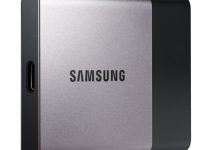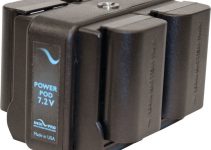2018 will be remembered as the year dominated by gimbal technology. Period. A lot of different companies have debuted on the market alongside a plethora of copycats rolled out in between as it becomes more and more difficult to make an informed choice considering all the alternatives available out there. Beyond any doubt, DJI and Zhiyun-Tech are still two of the main competitors on the market with their respective Ronin-S and Crane 3 Lab.
These two offerings have emerged among the others as the most common choices filmmakers can currently make. The tie between the two is a sign of the good quality both hold (with their unique strengths and weaknesses, of course). That being said, the following video comparison by seasoned filmmaker Parker Walbeck will be very useful if you’re planning on buying either of the two.
Price
The first comparison covered in the video is the easiest of all. Dollar for dollar, the Ronin-S comes out as cheaper when compared to the Crane 3, not to mention the Ronin’s Essential Kit which is definitely a steal. Easy win for Ronin here, but the price is not all that matters.
Build Quality
The feeling of the Ronin-S in your hand is firm and sturdy. It’s all made of metal and feels it’s built like a tank. That’s not to say that the Crane instead is prone to breaking. The materials used for the latter are high-quality plastics, but the feeling they communicate is not on the same level as the metal body of the Ronin-S.
Crane’s design, on the other hand, is certainly unique and innovative. Zhiyun has made a lot of effort to roll out a product that could tick all the right boxes. They solved the screen obstruction and made a great handle for low mode. Even though some of these choices are indeed useful in certain scenarios, they shouldn’t be considered as the ultimate solution for all shooting situations.
Form Factor and Weight
At half a pound less the weight is the Crane’s win, but that’s not it. The handle and the ability to lock the axis when moving around are a huge saver. Both devices easily fit in most backpacks, but the Crane still takes the crown.
Screen visibility
Again, this aspect does not change the game. The Ronin had the upper hand on the previous iteration of the Crane, the Crane 2, but the newer model addresses the issue lowering the back axis and cleaning up the view for the screen.
Overall Usability
So, which gimbal will be easier to set up and get to shoot once it is out of the bag? It seems that thanks to the companion app that is much more polished and less buggy than the one developed by Zhiyun-Tech, the Ronin takes this round.
The auto-tune ability and the overall less quirky interface make it easier to use, while the Crane is easier to balance thanks to the aforementioned locks on the single axis that make it quick to find the right spot.
Payload
On paper, the specs are telling us that the Crane has the bigger payload of the two, 10lbs against 8lbs of the Ronin, but actually, even if you could carry more weight, you’ll inevitably get to a point where the form factor of the camera will make it impossible to balance. Anyway, this is a score for the Crane 3.
Battery Life
Battery life is way longer on the Ronin. At 12 hours it’s almost double the run time of the Crane.
Camera Controls
The Crane has a better follow focus as it allows to connect the camera with a cable and change some settings directly from the gimbal. It may seem overkill, but the controls on the Crane 3 Lab are just a few inches away from your fingers so that depending on the situation, having the ability to modify exposure mid-shoot without moving the hands can be a big plus. So, score Crane. We’ll see how it goes with performances.
Real World Performance
The first test in this regard done by Wallbeck is a straight walk. He sets the gimbals to keep the camera stabilized while moving forward and backward. Both the rivals produced decent results at the task.
Having a perfect balance and choosing the correct settings in the gimbal will make all the difference in the world. Of course, as any motorized gimbal, there are still jitters produced by the vertical movement of the operator that are visible in the footage, but that’s part of the game with these gadgets.
So we can call a tie here, while in the full speed running test we have a clear winner, the DJI. Both gimbals have a certain amount of up and down movements, as it is expected while running, but the Ronin-S tends to handle these in a more natural way.
After the jogging around, let’s check out the Low Mode. That is when you invert the gimbal and try to float just a little bit around the ground, maybe following someone’s steps. Here the victory goes to Zhiyun, better ergonomics, and ease of use in this mode.
None of the two gets an advantage in the Parallax shot, though. What is it you may ask? It’s a shot where the camera pans in one direction while the whole gimbal system is rotating in the other, thus keeping the subject in the middle. It’s a very powerful shot, as it adds a lot of kinetic energy to your composition. Both of the gimbals, with the stiffness of the motors lowered down, can achieve it easily.
Closing down the movements’ list, we have the 360° barrel roll, or as some prefer to call it, the “Inception mode“. Here, the Crane shines again. The handle and the ergonomics are simply superior, and the rotation mode is just a click away while on the Ronin-S you need to enter the app and set up the shot (not difficult, but much less streamlined).
Wind Resistance
This aspect was tested shooting outside the window of a moving car, and the results were pretty good on both, but the same handle that makes the Crane the best choice in the Barrell roll and Low mode here becomes an inconvenience in between the camera and the operator that makes holding the unit too awkward while keeping the operator’s torso outside of the car.
Meanwhile, in the sports mode, we get the final point, and it’s again to the Ronin. Better tracking, less unwanted movement, overall a better choice for fast moving subjects.
With that, the comparison list is over. So what can we make of it? Parker has a personal preference for the Ronin-S. As for you, it depends on what you value most. Try to understand which are the features you’d be using the most while making a decision based on the strengths you can see highlighted here. As always, the final call is all yours!
[source: Parker Walbeck]
Order Links:
DJI Ronin-S Handheld Gimbal (B&H, Amazon)
Zhiyun-Tech CRANE 3 LAB Handheld Stabilizer (B&H, Amazon)
Disclaimer: As an Amazon Associate partner and participant in B&H and Adorama Affiliate programmes, we earn a small comission from each purchase made through the affiliate links listed above at no additional cost to you.



